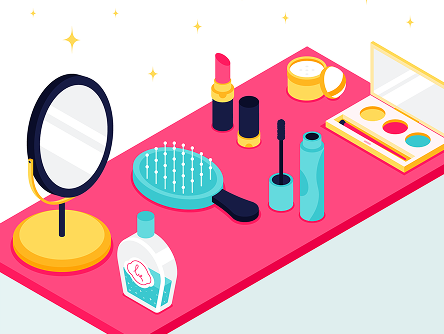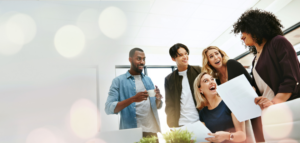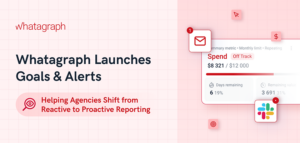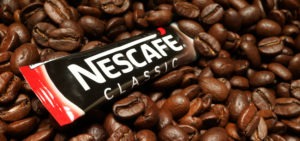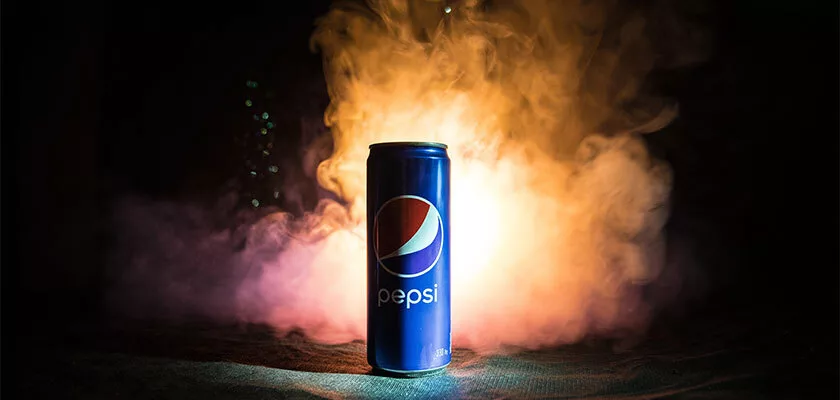
Pepsi Marketing Strategy: How the Brand Stays Ahead of the Competition
Renowned all over the world, Pepsi is definitely a necessary component of people’s gatherings and meals! But have you ever wondered how this company came to be, given its evident success?
Beginning as a small operation in North Carolina in 1893, Pepsi has grown into a global phenomenon, with distribution in over 200 countries. As one of the largest food and beverage brands in the world, Pepsi has had a significant impact on the marketing industry. Pepsi’s marketing strategy is one that every marketer ought to look at to gain insight from because it has an extensive record of effective marketing campaigns and creative strategies.
In 2020, despite the global challenges posed by the pandemic, PepsiCo reported a net revenue of over $70 billion, underscoring its resilience and the effectiveness of its diversified portfolio strategy. This figure not only reflects the brand’s financial health but also its ability to adapt and thrive in changing market conditions.
In this article, we’ll take a closer look at Pepsi’s marketing strategy, including its history, target audience, Pepsi’s advertising strategies, experiential marketing campaigns, and more. Let’s dive right in!
The History of Pepsi
Invented by Caleb Bradham in 1893 under the name of “Brad’s Drink”, Pepsi was initially sold in his drugstore to relieve indigestion. After being renamed as Pepsi-Cola in 1898, Pepsi quickly became a competitor to Coca-Cola, and by the 1930s, it was the second most popular soft drink in the world.
In the following decades, Pepsi continued to grow in popularity, and in 1965, the PepsiCo conglomerate was formed. Over the years, Pepsi has introduced various flavors and advertising campaigns to remain competitive in the soft drink market until today. But how did Pepsi achieve dominance in this highly competitive market? What are the secrets to the company’s marketing strategy?
Marketing Mix of Pepsi: A Short Lesson of Strategy and Innovation
Pepsi’s marketing mix, a blend of product, price, place, and promotion, shows us a dynamic approach to staying relevant and competitive. Let’s take a look at the layers of Pepsi’s marketing mix, exploring the strategies that have cemented its status as a household name.
Product: A Symphony of Flavors
Pepsi’s product strategy is anything but monolithic. At its core, PepsiCo offers a wide array of beverages and snacks, but focusing on the beverage side, Pepsi brand itself has diversified far beyond its classic cola. From Diet Pepsi to Pepsi Max , and more exotic flavors like Pepsi Wild Cherry, the brand continuously innovates its product line to cater to a broad spectrum of tastes and dietary preferences. Pepsi is committed to diversity and making sure there is a Pepsi for everyone, as evidenced by its diversification.
In recent years, innovation has been at the forefront of Pepsi’s product strategy. Recognizing the growing consumer demand for healthier options, Pepsi has introduced products like Pepsi Zero Sugar, which offers the beloved Pepsi taste without the sugar. Such innovations reflect Pepsi’s agility in responding to market trends and consumer health consciousness.
Are You Thirsty for Success?
We know what you need—a refreshing sip of strategic expertise. Below are our carefully selected agencies, each with a proven track record in Food & Beverage marketing.

CEEK Marketing
We admired CEEK Marketing’s campaigns for Mogu Mogu and Small Beer, growing TikTok views to 45M+ and organic traffic by 2,100%.

Propeller
Propeller’s redesign of Pocari Sweat’s store stood out for bold storytelling and optimization that drove 250% sales growth.
Price: Balancing Affordability and Value
Pepsi’s pricing strategy skillfully balances affordability with perceived value. The brand employs competitive pricing to ensure its products are accessible to a wide audience, yet it also leverages promotional pricing strategies, such as discounts and bundle offers, to drive sales and consumer engagement. Through this strategy, Pepsi goods not only appeal to consumers who are price conscious but also create a sense of loyalty and value among its clientele.
Place: Ubiquity Through Strategic Distribution
Pepsi’s distribution strategy is a marvel of logistics and market penetration. The brand ensures its presence in a variety of outlets, from supermarkets and convenience stores to restaurants and vending machines, making Pepsi products readily available to consumers wherever they are. Moreover, Pepsi has embraced eCommerce, recognizing the shift towards online shopping, thereby expanding its reach to digital platforms and delivery services. This omnipresence is crucial in maintaining Pepsi’s market dominance and catering to the convenience-driven consumer.
Promotion: Engaging Consumers with Creative Flair
Pepsi’s promotional tactics are a blend of traditional and digital marketing strategies, designed to engage consumers across multiple touchpoints. Pepsi’s advertising campaigns often feature celebrities and leverage popular culture, connecting with audiences through relatable and aspirational content.
Social media has a significant place in Pepsi’s promotional strategy as well, with the brand using platforms like Instagram or TikTok to interact with consumers, launch contests, and share engaging content.
@pepsi Need some WILD game day snack inspo for this weekend? ✨ Let us know which you are trying on Sunday #GetWild ♬ original sound – Pepsi
In recent years, Pepsi has doubled down on experiential marketing, creating immersive brand experiences that resonate with consumers on a personal level. From sponsoring major events like the Super Bowl Halftime Show to launching pop-up experiences, Pepsi uses these opportunities to create memorable moments that strengthen emotional connections with the brand.
PepsiCo’s Innovations and Adjustments
To stay competitive, Pepsi has not only expanded its product line but PepsiCo also embraced sustainability and social responsibility in the brand’s marketing mix. The company has launched initiatives aimed at reducing its environmental footprint, such as using recycled materials in its packaging and investing in renewable energy.
In fact, PepsiCo is committed to reducing the amount of virgin plastic in all of its beverage products by 35% by the year 2025. This initiative is part of its broader goal to make 100% of its packaging recyclable, compostable, or biodegradable by 2025.
Pepsi’s Target Audience: Understanding The Brand’s Demographics
The world of soft drinks is highly competitive. Thus, understanding and appealing to the right audience is perhaps the most important step towards a beverage brand’s success. Pepsi, however, has mastered the art of it, tailoring its marketing efforts to resonate with diverse consumer groups.
Pepsi’s target demographic is as varied as its product lineup, encompassing a wide range of ages, lifestyles, and geographic locations. At its core, Pepsi aims to appeal to a youthful, vibrant audience, positioning itself as a brand for those who are young at heart, regardless of their actual age.
Age Groups: The Young and the Young at Heart
Pepsi has traditionally focused on the younger demographics, particularly targeting teenagers and young adults aged between 15 and 35. This focus is evident in the brand’s advertising campaigns, which often feature pop culture icons, music, and sports celebrities that appeal to a younger audience. However, Pepsi’s appeal is not confined to the youth alone; the brand’s messaging also connects with older demographics who identify with a youthful spirit and energy, making it a beverage for all ages.
Lifestyle Segmentation: A Drink for Every Occasion
Pepsi positions itself as the perfect companion for a variety of occasions – from casual gatherings with friends to celebratory moments and everything in between. Pepsi targets its marketing at people who lead active, social lives by highlighting how its drinks can make these situations better. Whether it’s through sponsoring major sporting events or creating ads that depict Pepsi at the heart of life’s joyful occasions, the brand consistently aligns itself with a dynamic and engaging lifestyle.
Pepsi Marketing Strategies
PepsiCo has been a major player in the food and beverage industry for over a century. The company has a diverse portfolio of brands that includes Pepsi, Frito-Lay, Quaker Oats, Tropicana, and Gatorade. Pepsi marketing strategy is focused on creating a strong emotional connection with consumers through a combination of different marketing techniques and the company’s marketing campaigns are designed to appeal to a wide range of consumers, from young adults to families, and from health-conscious individuals to sports enthusiasts.
One of the key elements of Pepsi’s marketing strategy is definitely its strong brand identity. Pepsi is known for its fun, youthful, and aspirational image, and it uses this image to connect with consumers around the world. You could find it challenging to create a distinctive brand identity for your business and question how to do it the way Pepsi did; nevertheless, food and beverage marketing agencies in the USA can help you achieve this.
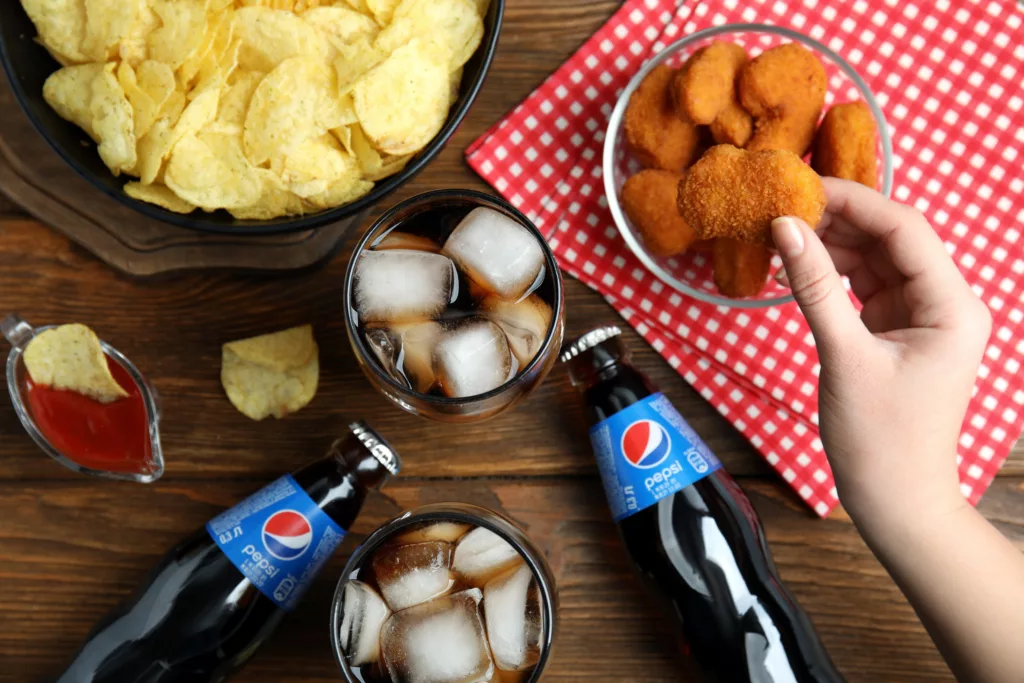
Pepsi’s Interactive and Experiential Marketing Approach
Pepsi excels in creating interactive marketing campaigns that engage consumers directly. The Pepsi Challenge, one of the most famous marketing campaigns in history, invited consumers to blind taste tests against Coca-Cola, fostering consumer interaction and brand loyalty. More recently, Pepsi has utilized augmented reality (AR) and virtual reality (VR) experiences to engage consumers in novel ways, such as the Pepsi Max Unbelievable campaign. Experiential marketing remains a key strategy for Pepsi, with the brand creating events and experiences that leave lasting impressions on participants.
Pepsi has also launched pop-up experiences and interactive installations in various cities, offering consumers a unique way to engage with the brand. These events often feature product tastings, interactive games, and photo opportunities, making them highly shareable on social media.
@averagesocialite NYC: Quick ~ More tickets are available now for the @Pepsi 125 Diner Experience through Oct 29! This experience was so fun ~ from the photo ops to the Pepsi inspired menu. Don’t miss out! #pepsi #pepsi125diner #nyc #newyorkcity #thingstodonyc #popup #nycpopup #nycfoodie #britneyspears #cardib #shaq #colachup #pepsihalftime #pepsichallenge ♬ som original – Re.what?
Pepsi’s Limited Edition Flavors and Collaborative Products
Pepsi frequently introduces limited edition flavors and collaborates with other brands to create unique products. These initiatives generate excitement and buzz among consumers, encouraging them to purchase while they can. For example, Pepsi x Peeps, a marshmallow-flavored cola, and Pepsi Mango, the brand’s first permanent flavor introduction in five years as of 2021, showcase Pepsi’s innovative approach to product development.
Pepsi’s Celebrity Endorsements and Pop Culture Integration
Pepsi has a storied history of partnering with celebrities and integrating into pop culture, making it a trendsetter in advertising. Pepsi has used the enormous fan bases of celebrities like Michael Jackson, Beyoncé, and most recently, the K-pop sensation BTS to create excitement, attract younger consumers, and remain relevant in the continually changing entertainment industry.
Pepsi’s Sponsorships and Partnerships
In addition to celebrity endorsements, Pepsi also sponsors a variety of sporting and other cultural events helping the company to associate its brand with positive experiences. With these collaborations, as the primary sponsor of numerous well-known sports events like the Super Bowl, NBA, and UEFA Champions League, Pepsi has established an important association between brands and sporting events.
Pepsi’s Social Media Presence
Pepsi is also active on social media, and it uses this platform to connect with consumers and promote its products. The brand has a large following on platforms like Facebook, Twitter, and Instagram, and it uses these platforms to share news about its products, run contests, and engage with consumers.
With over 1.5 million followers, Pepsi’s Instagram account is always very active and engaging. The brand posts high-quality images with people enjoying the beverage as well as familiar faces like Lindsay Lohan to ace the instagram marketing game. Social media requires dedication and can become highly time-consuming to engage with your brand’s target audience. If you struggle to maintain a strong social media strategy as a business, we advise you to collaborate with social media marketing agencies in USA to have a captivating social media presence, similar to what Pepsi has.
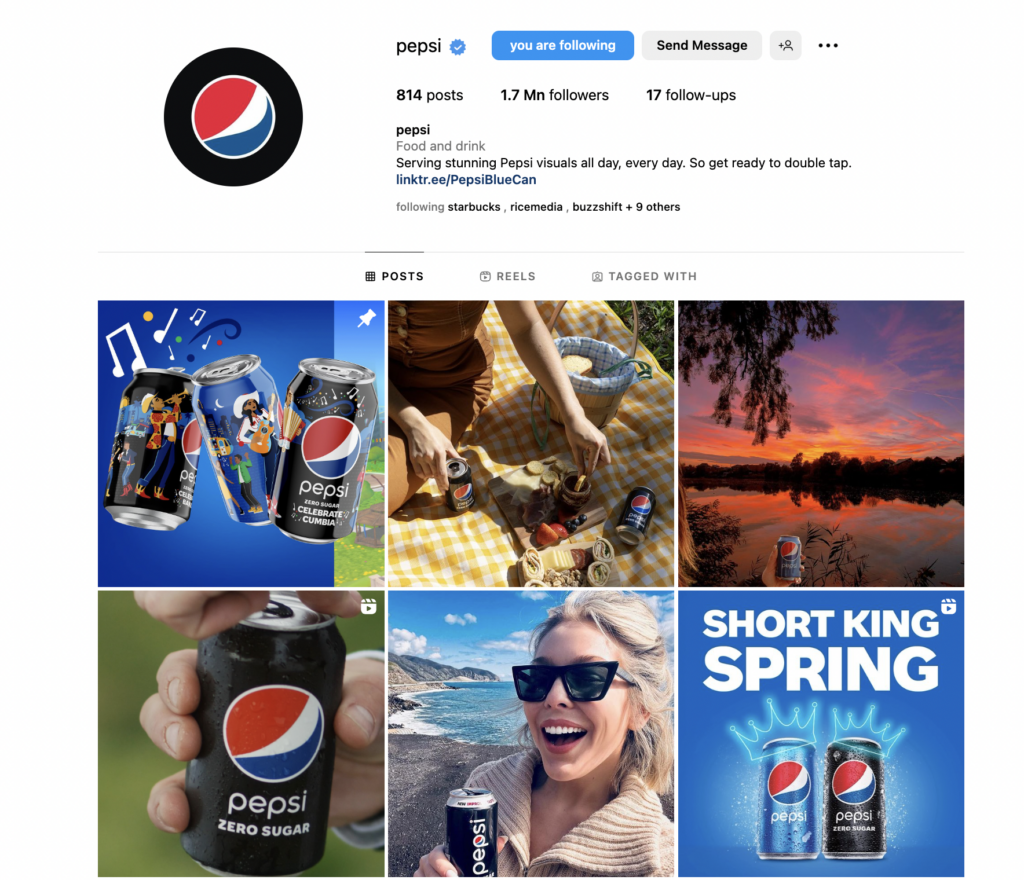
Greatest Advertising Campaigns of Pepsi
Pepsi ad campaigns often feature celebrities and popular culture references, and they’re designed to appeal to a wide range of consumers. The brand’s packaging is another key element that sets it apart from competitors; customers of all ages love the red, blue, and white logo.
We all know that Pepsi has made significant investments in memorable and creative advertising campaigns; they have collaborated with well-known figures from the world of entertainment including Michael Jackson, Britney Spears, and Kendall Jenner. These endorsements help in expanding Pepsi’s target audience as well as improving the brand’s reputation and image.
Here are Pepsi’s most effective advertising campaigns:
Pepsi Zero Sugar “Better With Pepsi” Campaign
#BetterWithPepsi campaign emphasized the idea that certain foods taste “Better With Pepsi,” particularly focusing on the Pepsi Zero Sugar variant. It cleverly positioned Pepsi as the perfect complement to popular foods, using humor and relatable situations to appeal to its audience. The campaign featured various digital ads, pepsi social media ads, and TV commercials, highlighting the no-sugar option as the ideal choice for health-conscious consumers who do not want to compromise on taste.
Michael Jackson – Pepsi Generation Campaign
Aimed for young adults, Pepsi launched its “Pepsi Generation” campaign in the 1960s featuring legendary Michael Jackson.
Pepsi Super Bowl Halftime Show 2020 x Shakira & Jennifer Lopez
Despite being a prominent sponsor of sporting events, Pepsi has also supported many shows and festivals, including Coachella and the Super Bowl Halftime Show. Pepsi is able to market its products to a large audience both at the event and in the surrounding area by sponsoring events like these.
Pepsi “That’s What I Like” Campaign
Pepsi’s “That’s What I Like” campaign, launched in the U.S., was aimed at celebrating the unapologetic enjoyment of Pepsi by its fans. It featured everyday people in moments of genuine joy and satisfaction while enjoying a Pepsi, capturing the essence of the brand’s connection with its consumers’ love for life’s simple pleasures. This campaign was spread across multiple media channels, including TV, digital platforms, and social media, reinforcing the brand’s position as a source of joy and refreshment.
Pepsi x UEFA Champions League Partnership
Continuing its association with sports, Pepsi launched a series of campaigns tied to its sponsorship of the UEFA Champions League. These campaigns featured global football stars and aimed to capture the excitement and passion surrounding one of the world’s most prestigious football competitions. Through digital content, limited-edition packaging, and fan experiences, Pepsi leveraged this partnership to enhance its brand visibility and engagement with football fans worldwide.
A Quick Look at Pepsi’s All Time Rival: Coca Cola
PepsiCo and Coca-Cola are two of the largest FMCG companies in the world, but they have several key differences in their products, marketing, and business strategies. While both companies produce carbonated soft drinks, PepsiCo has a more diversified product portfolio that includes non-carbonated beverages like Gatorade, Tropicana, and Aquafina. Coca Cola, on the other hand, has focused more on carbonated soft drinks and has a smaller portfolio of non-carbonated beverages.
Their marketing strategy differs from each other as well. Pepsi has traditionally targeted younger demographic with its marketing campaigns, using celebrity endorsements and sponsorships of music and sports events to appeal to this audience. Coca-Cola marketing strategy, meanwhile, has aimed for a broader, more universal appeal with its “Share a Coke” and “Taste the Feeling” campaigns.
And finally, while both companies have strong brand identities, PepsiCo has positioned itself as a more youthful and innovative brand, while Coca-Cola has emphasized its long history and tradition. Both brands are no doubt major players in the FMCG industry and are constantly innovating to stay competitive. If you want to reach and convert high-value consumers as well, you can consider finding FMCG marketing agencies in the USA to assist you in achieving your company objectives.
Pepsi Marketing Strategy FAQs
What is Pepsi’s marketing strategy?
Pepsi’s marketing strategy is built around youthfulness, innovation, and pop culture relevance. By leveraging celebrity endorsements, experiential campaigns, and a strong social media presence, Pepsi maintains emotional connections with consumers. Its approach combines a diversified product portfolio, competitive pricing, strategic global distribution, and bold, lifestyle-focused advertising to stay top-of-mind in a saturated market.
What’s the difference between Coca-Cola and Pepsi’s marketing strategy?
While both brands are giants in the soft drink industry, Pepsi and Coca-Cola take notably different marketing approaches. Pepsi positions itself as the younger, edgier, and more trend-focused brand, often collaborating with celebrities, sponsoring music and sports events, and launching bold, limited-time products. Coca-Cola, on the other hand, leans into nostalgia and universal connection, emphasizing timeless values like happiness and togetherness. This contrast defines how each brand builds its emotional appeal.
How does Pepsi promote their products?
Pepsi promotes its products through a mix of traditional and digital marketing channels. These include celebrity-driven commercials, viral social media campaigns, experiential pop-ups, sports sponsorships, and influencer partnerships. Pepsi is also known for tying its promotions to cultural moments—like the Super Bowl Halftime Show or trending TikTok challenges—ensuring relevance and visibility among younger demographics.
How can Pepsi increase its market share?
To increase its market share, Pepsi can continue diversifying its product lineup with healthier and more sustainable options, strengthen its presence in emerging markets, and enhance personalization in digital campaigns. Expanding strategic partnerships and leveraging data-driven marketing to target niche segments can also fuel growth. Additionally, deeper investments in eCommerce and direct-to-consumer strategies will help Pepsi tap into shifting consumer behaviors.
Conclusion
PepsiCo has a long history of successful marketing campaigns and innovative strategies that have helped it to become one of the largest food and beverage companies in the world. Through a combination of Pepsi advertising, experiential marketing, and social media engagement, PepsiCo has been able to create a strong emotional connection with consumers and build brand awareness and loyalty.
Most crucially, PepsiCo has been able to increase its reach and growth by adjusting its marketing strategies to local cultures and preferences. Certainly, each of these elements plays a part in Pepsi’s success as a global brand.











